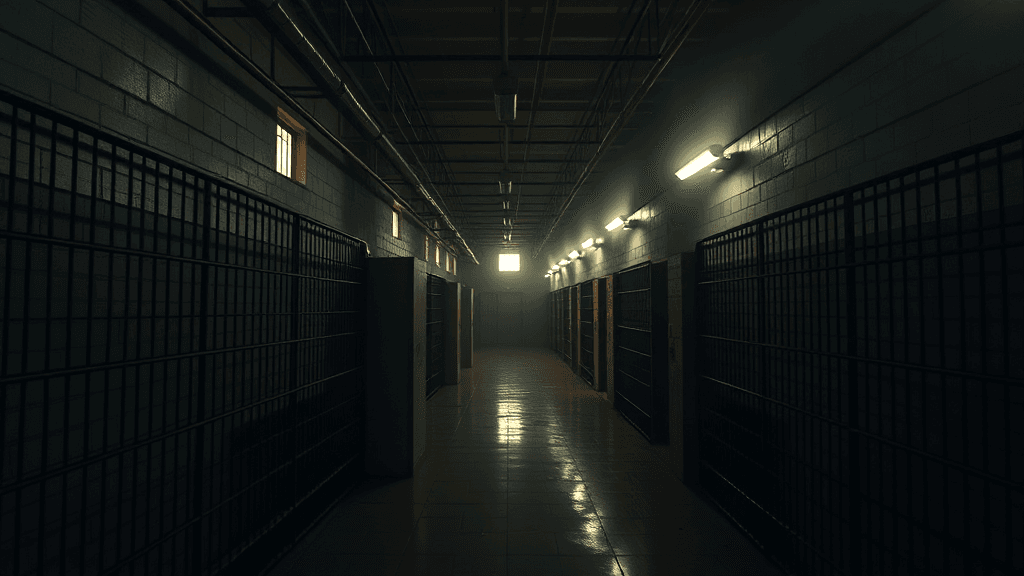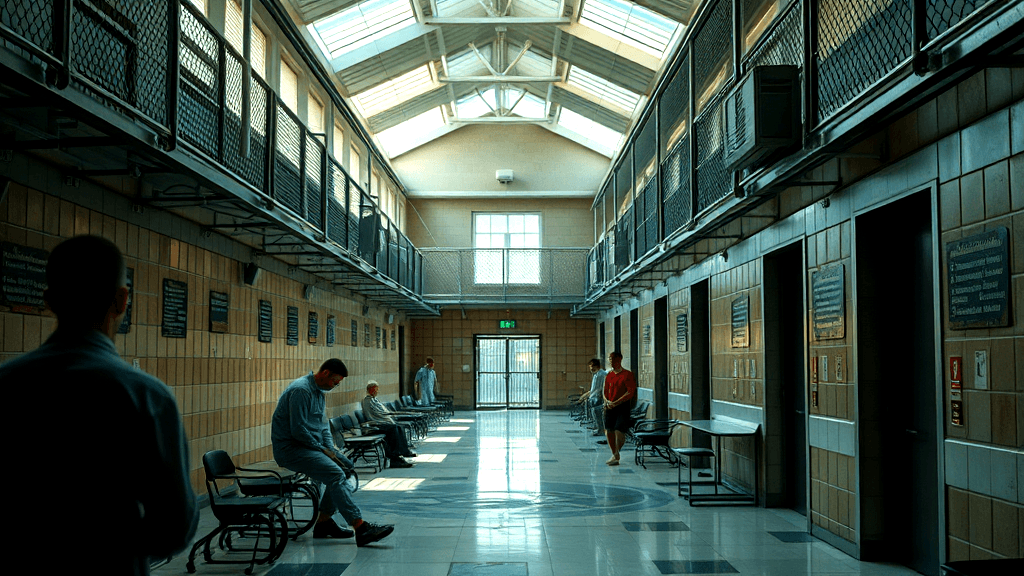Facts on Pennsylvania’s Prison System
Pennsylvania’s prisons have become a hot topic, quite literally. With incarceration rates of 589 per 100,000 residents, many people in Pennsylvania face the harsh reality of confinement. The heat stifles Pennsylvania, especially in older facilities lacking air conditioning. Imagine surviving summer with no breeze! The heat inside prisons can be unbearable, affecting the well-being of incarcerated people, particularly the elderly. These conditions are why the Pennsylvania Prison Society pushes for change. Their advocacy highlights the dire need for improved facilities and fair treatment. Understanding Pennsylvania’s prison system goes beyond numbers—it’s about recognizing the human impact. This article dives into the current state and challenges of Pennsylvania state prisons.

History of Incarceration in Pennsylvania
The incarceration journey in Pennsylvania has been shaped by its bold approaches to criminal justice. Over the last 40 years, pennsylvania prisons have seen numbers soar, affecting many aspects of the state. The high heat inside older facilities is a pressing issue, as it affects the well-being of incarcerated people. This discomfort calls for better cooling measures to ensure humane conditions. Meanwhile, the diverse people in Pennsylvania continue to navigate these challenges. As the pennsylvania profile evolves, the future may hold more reforms to address these pressing concerns, aiming for a more balanced and humane system.
Current Incarceration Rates and Trends
Examining the current incarceration scenario, Pennsylvania prisons are bursting at the seams. With an incarceration rate of 589 per 100,000, the state wrestles with overcrowding. This impacts not just the 73,000 imprisoned souls but also those on probation. The high heat inside prisons adds another layer of discomfort, especially for the older inmates. Incarcerated people face grueling summers, with many facilities lacking proper cooling. It’s a sweaty situation that’s hard to ignore. With such conditions, people in Pennsylvania are urging for reforms. The state’s criminal justice system requires a significant rethink.

Demographics of Incarcerated People
Pennsylvania prisons reflect stark disparities, with racial imbalances and an aging inmate population. Black individuals face a higher likelihood of imprisonment. Meanwhile, 15% of inmates are over 55, increasing costs without much risk of re-incarceration. Gender disparities also persist, posing unique challenges. The high heat inside prisons, especially during summers, exacerbates these issues. Many older facilities lack air conditioning, raising alarms about the safety and well-being of incarcerated people. This situation is highlighted by external reports, such as the NPR article, which illustrates similar conditions.
Racial Disparities in Pennsylvania Prisons
Examining racial disparities in Pennsylvania, it’s clear incarcerated people of color face significant challenges. Black individuals experience higher incarceration rates compared to white people in Pennsylvania. This disparity reflects broader systemic issues within Pennsylvania prisons. The high heat inside worsens conditions, affecting inmates’ well-being. The lack of cooling in older facilities adds to the discomfort. Advocacy for change continues, highlighting the need for reform. Addressing these disparities is crucial for a fair justice system. Reform efforts focus on reducing racial disparities, improving conditions, and ensuring humane treatment. Reforming the system could greatly impact lives.

Age and Gender Statistics
Exploring age and gender reveals intriguing insights into Pennsylvania’s prison challenges. About 15% of inmates are over 55, leading to higher costs but lower re-incarceration risks. This aging population feels the strain of high heat inside older facilities, lacking air conditioning. Gender differences also create distinct issues, particularly affecting women. The conditions for these individuals are highlighted in various reports, like the extreme heatwaves faced in the region. More on this topic is discussed here. The broader demographic trends showcase the need for tailored reforms.
Conditions Inside Pennsylvania State Prisons
Exploring the realities of Pennsylvania’s incarceration facilities reveals pressing issues. The heat inside prisons often turns unbearable, especially in older structures. Many lack air conditioning, leaving inmates to endure sweltering conditions. This high heat aggravates existing medical conditions, posing a major concern for the incarcerated. With incarceration rates being notably high, the challenges faced by the diverse people in Pennsylvania are significant. The call for reform is loud, aiming for more humane conditions. It’s clear that addressing these issues is crucial for the state’s justice system to truly serve its purpose.
High Heat and Lack of Air Conditioning
Sweltering temperatures in Pennsylvania’s correctional facilities paint a grim picture. With the absence of cooling systems, inmates endure scorching conditions, especially in older facilities. This escalates concerns for the elderly and those with medical conditions. Consider Laurel Highlands, where heat exacerbates the discomfort for vulnerable individuals. The soaring temperatures not just test patience but also challenge the resilience of those confined. While officials monitor temperatures and offer some relief, the lack of proper air conditioning remains a thorny issue. The quest for more humane conditions becomes a rallying cry for change amidst the heat.

Health Risks for Incarcerated Individuals
In Pennsylvania’s correctional facilities, the health dangers for individuals are increasingly concerning. Sweltering summer temperatures, combined with inadequate air conditioning, create unbearable conditions. Those with pre-existing medical issues face heightened risks, particularly older inmates. Despite some monitoring and relief measures, the situation remains dire. This mirrors the challenges seen in other regions, such as Texas, where similar conditions persist as highlighted here. With incarceration rates high, addressing these issues becomes essential for ensuring humane conditions and safeguarding inmate well-being.

Pennsylvania Prison Society: Advocacy and Support
Advocacy and support within the Pennsylvania Prison Society play a crucial role in improving conditions for those affected by the state’s justice system. They spotlight the glaring need for reforms, especially in facilities sweltering from lack of cooling, as detailed in reports about extreme heat in places like Erie (source). They also address systemic issues, advocating for better resources and support for families. By challenging the status quo, they aim to transform Pennsylvania’s correctional environment into a more compassionate and equitable system.
Economic Impact of Mass Incarceration
Mass incarceration’s economic toll in Pennsylvania is staggering, impacting every layer of society. With over 73,000 individuals confined, the financial burden is hefty. Families bear the cost of lost income and emotional strain. Communities suffer as resources are diverted from education and healthcare to sustain this system. There’s growing advocacy for more efficient solutions, as seeking alternatives could save taxpayers millions. Meanwhile, Pennsylvania grapples with outdated facilities needing costly upgrades. Initiatives aimed at reducing incarceration rates and reforming laws could help combat these financial challenges. It’s a complex issue demanding both urgency and innovation.
challenges. Racial disparities add another layer, with a higher proportion of people of color behind bars. The system also grapples with aging populations, raising costs while risks remain low. These issues underscore the need for targeted reforms. Addressing these concerns could lead to a more balanced approach, improving outcomes and ensuring a fairer system for all involved.

Challenges Facing Older Prison Facilities
Renovation needs in older Pennsylvania correctional facilities are pressing. These buildings often lack modern systems, like air conditioning, posing stark challenges. The sweltering summers bring discomfort, especially for the elderly and those with medical issues. Updating these structures isn’t just a luxury but a necessity for maintaining humane conditions. Retrofitting offers a path to relief, potentially reducing operational costs by improving energy efficiency. Addressing these issues might ease the strain on both inmates and staff, fostering a safer environment. Acknowledging these challenges is crucial for propelling meaningful reforms forward.

Future Directions and Reforms
Reimagining paths and changes for Pennsylvania’s correctional system involves a multi-faceted approach. Emphasis is on reducing the high number of individuals behind bars and tackling racial disparities head-on. Advocates call for improved living conditions, especially in older buildings lacking essentials like air conditioning. There’s a push for policies that balance public safety with humane treatment, focusing on rehabilitation over punishment. By addressing these areas, reformers aim to create a system that not just confines, but also prepares individuals for life beyond bars, fostering a safer and more just community for everyone involved.




0 Comments